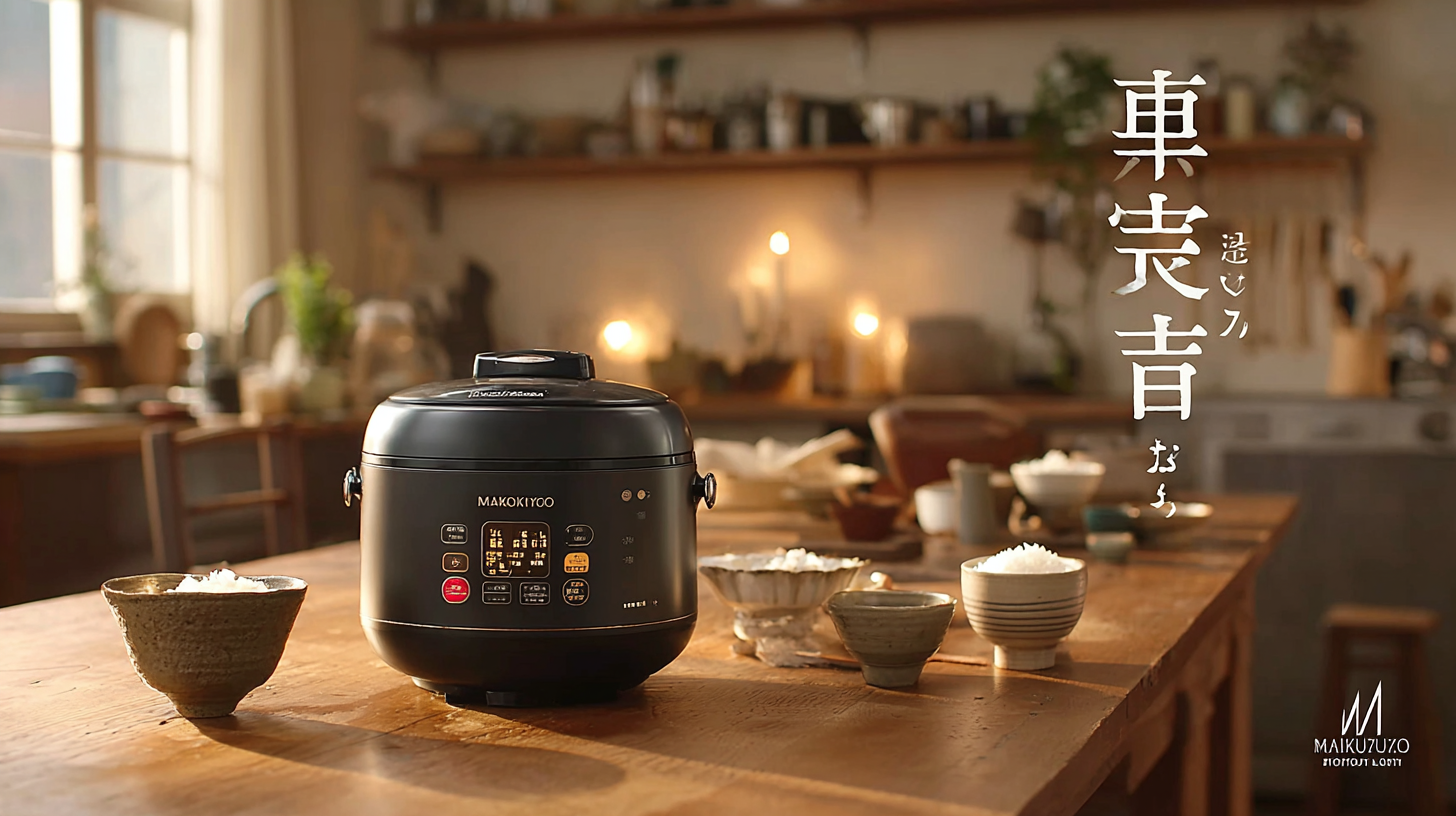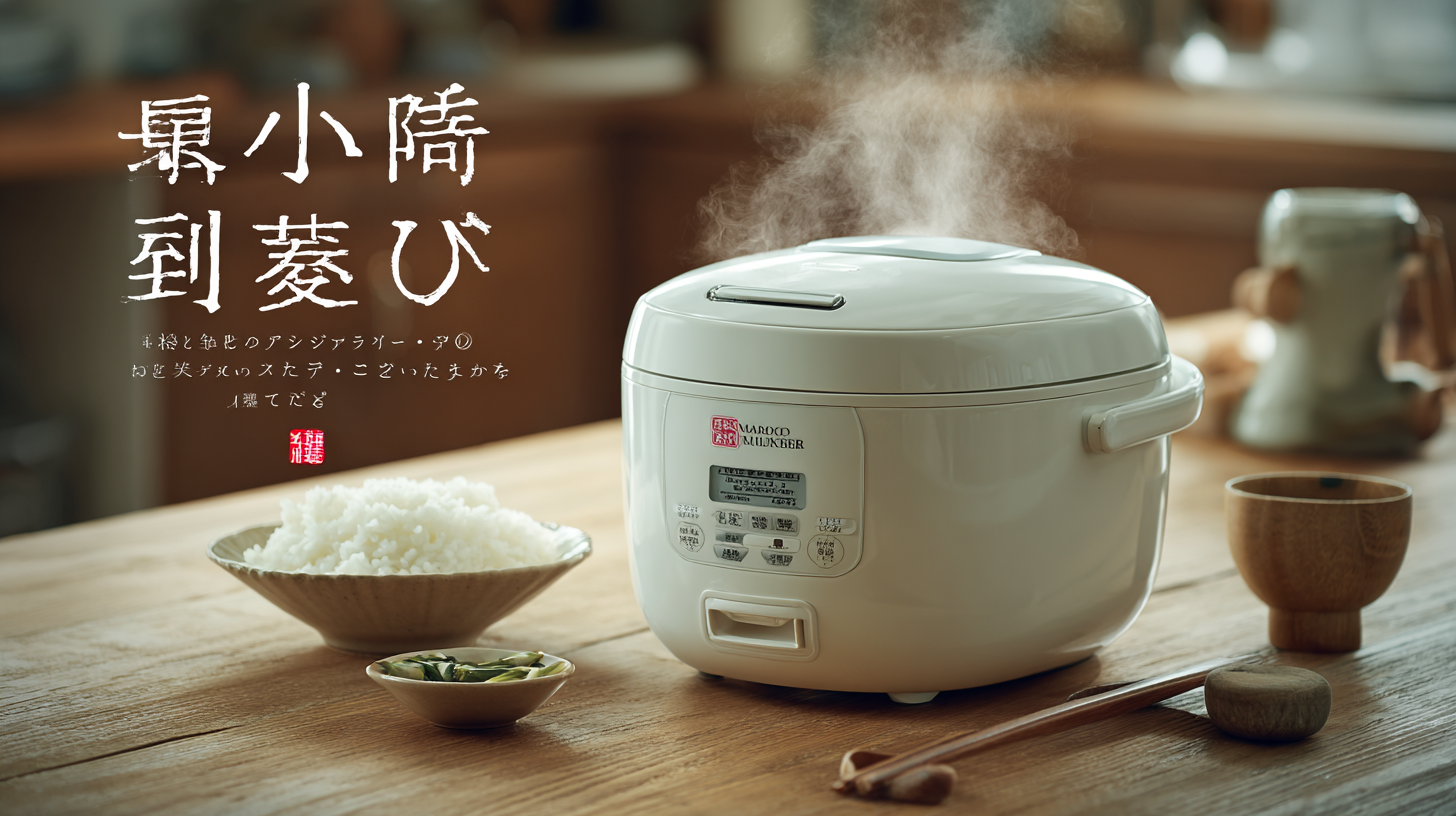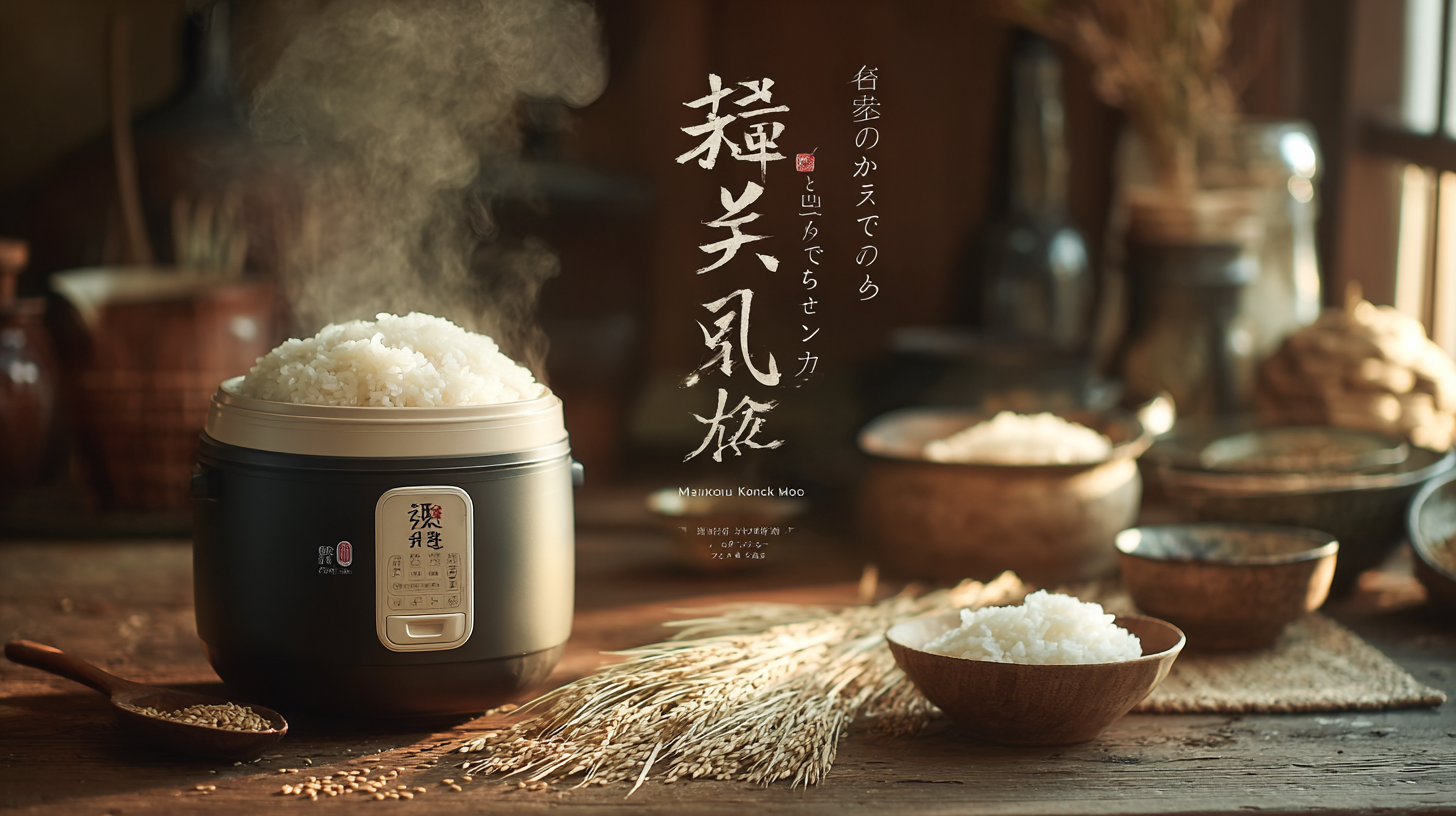- +86-13631182173
- sales@zsqeelin.com
- 8613631182173
In recent years, the demand for high-quality rice cookers has surged, reflecting a growing appreciation for perfectly cooked rice across various culinary cultures. Among the notable brands in the market, the Marukyo Rice Cooker stands out for its innovative technology and user-friendly design. According to a report by the Global Kitchen Appliances Market, the rice cooker segment is projected to grow significantly, with an estimated market value reaching $2.3 billion by 2025. This growth demands rigorous standards in manufacturing, especially from leading production hubs like China, known for its superior craftsmanship. However, as manufacturers strive to meet these rising standards, they face several challenges, including strict regulatory requirements and the need for sustainable practices. This blog will delve into the production standards and challenges faced in the creating of the renowned Marukyo Rice Cooker, highlighting the delicate balance between quality, efficiency, and consumer satisfaction.

The global market for rice cookers has witnessed significant growth, with Marukyo rice cookers gaining increasing popularity among consumers. According to a recent report from Market Research Future, the global rice cooker market is projected to grow at a CAGR of approximately 5.6% from 2021 to 2027, driven by the rising demand for automated cooking solutions. Marukyo, known for its state-of-the-art technology and user-friendly designs, is strategically positioning itself to capture a larger market share.
As more consumers shift towards healthier eating habits and seek convenience in meal preparation, Marukyo rice cookers have emerged as an attractive option. The versatile functionality of these cookers not only simplifies rice preparation but also allows for multi-cooking capabilities, appealing to a modern lifestyle. A survey by Statista revealed that more than 45% of households in urban areas are now investing in electric rice cookers, with Marukyo leading the charge due to its innovative features and competitive pricing. This surge in demand highlights a profound shift in consumer behavior and underscores the future growth potential for Marukyo in the global market.

The production of Marukyo rice cookers in China adheres to various quality control standards, essential for ensuring safety and performance. These standards are further emphasized by the urgent need to address the emissions and pollutants released from cooking appliances. Recent studies have shown that typical residential cooking in China can generate significant amounts of volatile organic compounds (VOCs) and particulate matter (PM), which pose health risks to consumers.
To ensure high-quality rice cookers, manufacturers must implement rigorous testing procedures that consider emission factors. This aligns with broader health assessments regarding indoor air quality and cooking emissions. By selecting materials that minimize VOCs and establishing cleaner combustion processes, producers can enhance both the functionality of their products and the safety of home cooking environments.
Tips: When choosing a rice cooker, look for models with certifications or labels that indicate low emissions. Additionally, consider investing in appliances that feature advanced technology aimed at reducing cooking-related pollutants. Regular maintenance and cleaning of your cooking devices can also help mitigate the risks associated with indoor air quality.
Manufacturers in the rice cooker industry face numerous challenges that can impact the production process and the final product quality. One of the foremost issues is the rapid technological advancement in kitchen appliances. Keeping up with the latest technology requires substantial investment in research and development, which can strain the resources of smaller manufacturers. Additionally, the competition is fierce, with many brands vying for consumer attention. This pressure often leads to a race to lower prices, which can compromise quality and reliability.
To navigate these challenges, manufacturers should prioritize innovation while maintaining a commitment to quality. Ensuring strict quality control throughout the production process can help brands stand out in a crowded market. Furthermore, manufacturers can benefit from establishing strong partnerships with suppliers to ensure a steady flow of high-quality materials.
Tip: Always invest in customer feedback mechanisms. Understanding user experiences can provide insights into potential improvements, enhancing product development strategies.
Another significant challenge is sustainability. As consumers become more environmentally conscious, manufacturers are pressured to adopt eco-friendly practices. This can mean re-evaluating materials, reducing energy consumption during production, and offering products designed for longevity.
Tip: Implementing sustainable practices not only helps the environment but can also attract a growing segment of consumers willing to pay a premium for eco-friendly products.
The production of Marukyo rice cookers has seen a significant transformation thanks to innovative technologies that enhance efficiency and quality. Modern advancements such as induction heating and microprocessor controls equip these cookers to deliver perfectly cooked rice every time. Induction heating, in particular, allows for better heat distribution and faster cooking times, ensuring that rice is evenly cooked without the risk of burning. This technology not only improves the cooking quality but also saves energy, making Marukyo rice cookers a sustainable choice for eco-conscious consumers.
Furthermore, the integration of smart technology has taken the efficiency of Marukyo rice cookers to the next level. With the ability to connect to smartphone applications, users can customize cooking settings, monitor progress remotely, and receive notifications when their rice is ready. This level of control provides a user-friendly experience, catering to varying preferences for texture and flavor. As these innovative solutions continue to evolve, Marukyo rice cookers are set to dominate the market by meeting the modern demands of consumers while upholding high standards in rice preparation.

When it comes to exporting Best Marukyo rice cookers to international markets, understanding local preferences and standards is crucial. Each region has its specific culinary traditions and cooking styles, which determine the features that consumers most value in a rice cooker. For example, while Japanese consumers might prioritize features like automatic cooking settings and keep-warm functions, markets in Southeast Asia might focus on multifunctionality and energy efficiency. Conducting thorough market research can help manufacturers tailor their products to meet these diverse needs, ensuring greater acceptance in foreign markets.
Additionally, navigating regulatory requirements is a significant challenge for exporters. Different countries have varying standards for electrical appliances, ranging from safety certifications to energy efficiency ratings. Adapting Best Marukyo rice cookers to comply with these regulations not only enhances product appeal but also builds consumer trust. This dedication to quality and safety can serve as a powerful marketing tool, distinguishing Best Marukyo in competitive international markets. By combining a deep understanding of consumer preferences with rigorous compliance to standards, companies can successfully position their rice cookers abroad.
This chart illustrates the market share distribution of rice cookers in various international markets, showcasing the prominent regions and their respective percentages. The data reflects the competitive landscape in the rice cooker industry.
